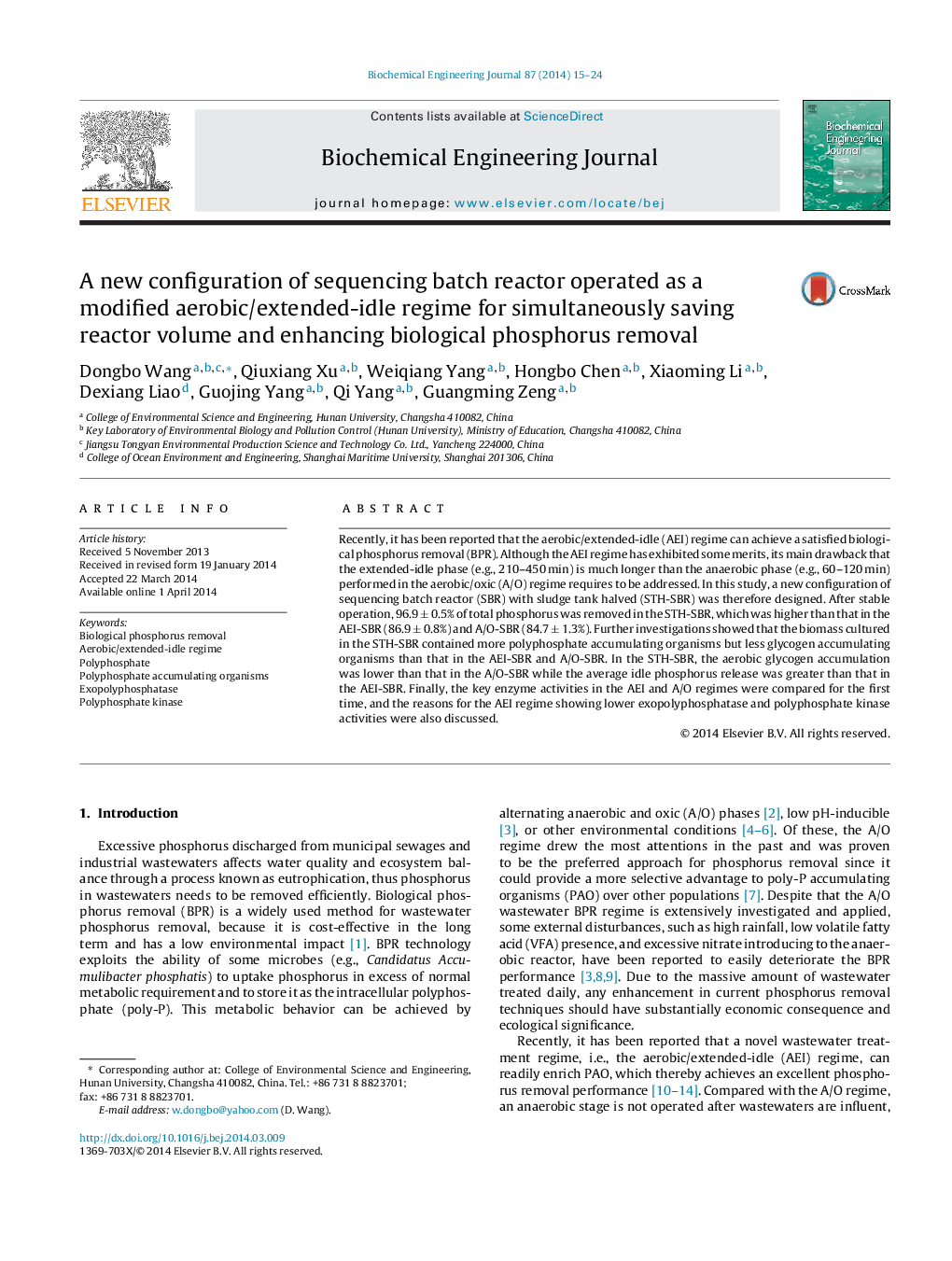| Article ID | Journal | Published Year | Pages | File Type |
|---|---|---|---|---|
| 3203 | Biochemical Engineering Journal | 2014 | 10 Pages |
•A new configuration of SBR was designed to save reactor volume in the AEI regime.•The new configuration of SBR showed higher BPR than the A/O-SBR and AEI-SBR.•The biochemical metabolisms in the new configuration of SBR were followed by those in the AEI-SBR.•The activities of PPX and PPK between the A/O and AEI regimes were compared for the first time.
Recently, it has been reported that the aerobic/extended-idle (AEI) regime can achieve a satisfied biological phosphorus removal (BPR). Although the AEI regime has exhibited some merits, its main drawback that the extended-idle phase (e.g., 210–450 min) is much longer than the anaerobic phase (e.g., 60–120 min) performed in the aerobic/oxic (A/O) regime requires to be addressed. In this study, a new configuration of sequencing batch reactor (SBR) with sludge tank halved (STH-SBR) was therefore designed. After stable operation, 96.9 ± 0.5% of total phosphorus was removed in the STH-SBR, which was higher than that in the AEI-SBR (86.9 ± 0.8%) and A/O-SBR (84.7 ± 1.3%). Further investigations showed that the biomass cultured in the STH-SBR contained more polyphosphate accumulating organisms but less glycogen accumulating organisms than that in the AEI-SBR and A/O-SBR. In the STH-SBR, the aerobic glycogen accumulation was lower than that in the A/O-SBR while the average idle phosphorus release was greater than that in the AEI-SBR. Finally, the key enzyme activities in the AEI and A/O regimes were compared for the first time, and the reasons for the AEI regime showing lower exopolyphosphatase and polyphosphate kinase activities were also discussed.
Graphical abstractFigure optionsDownload full-size imageDownload as PowerPoint slide
